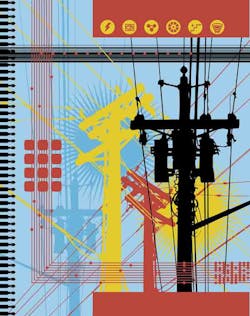It also gives engineers the ability to use charts, plots and diagrams, says Gray, application manager with automation provider Emerson Process Management’s Rosemount Analytical Liquid Division (www.emersonprocess.com/RAIhome/liquid), in Irvine, Calif. That ability, plus the expanded help capability within the EDD (electronic device description) make it easier to give users actionable information about devices, he says. “The whole idea is to let the user know what is going on with the device and any actions that need to be taken, quickly and clearly, and to make configuration commissioning easier.”EDDL is an International Electrotechnical Commission (IEC, www.iec.ch) standard: “IEC 61804-2: Function blocks [FB] for process control–Part 2: Specification of FB concept and Electronic Device Description Language.” Through the standard, users can calibrate instruments, diagnose problems, provide data for user-interface displays, identify process alarms and obtain information needed for high-level software, explains Bill Hodson, senior principal engineer for automation control systems for vendor Honeywell Industrial Measurement & Control (www.honeywell.com/imc), in Fort Washington, Pa. What devices may benefit most from EDDL? Complex devices such as valve controllers and radar level gauges, responds David Ferreira, consulting software engineer for intelligent-device configurators within Invensys Process Systems’ (www.invensys.com) Foxboro Measurement and Instrumentation Development group (www.foxboro.com), an automation vendor in Foxborough, Mass. “But many other products, including pressure transmitters, are building support for this use.” As more host systems support EDDL, more device descriptions will be updated and written to use the new features, he believes.Employing EDDL, users improve plant operations’ reliability, states Hodson. One avenue is better diagnostics, through which “they’ll be able to stay online longer and avoid more unplanned shutdowns due to sensor/actuator failures.” For example, EDDL can be used with pH sensors to indicate if the sensor is getting dirty, Hodson notes. However, EDDL does nothing directly for diagnostics, Rosemount Analytical’s Gray mentions. Rather, it’s an underlying technology that can be used to handle or show field device status via parameters that come through a device’s intelligent diagnostic functions.Diagnostic targetsValves are high-value diagnostics targets, Honeywell’s Hodson adds. That’s because the language extensions in EDDL allow diagnoses to be presented more effectively, he explains. “Internal diagnostics can save a lot, [because] valves cost a lot of money and its costs a lot to tear them down.” Because EDDL is required for Foundation Fieldbus (FF) host systems to communicate with FF or hybrid devices, “it is a must for every device,” concludes Dave Smith. With process instrumentation, EDDL is used to enumerate computing platform data into a simple-to-understand language, while also providing the means to optimize and distribute memory usage and processing power, adds Smith, who is manager, plant network technologies, within automation vendor Yokogawa Corp. of America’s (www.yokogawa.com/iab) Systems Product Deployment/Marketing group, in Atlanta. He applauds EDDL’s asset management benefits. A complementary technology to field-device tool/device-type manager (FDT/DTM), EDDL allows technical and business-savvy users to decide the best strategy for using everything from simple instruments to complex intelligent devices that support condition-based maintenance strategies, he explains.Clearly, EDDL has great potential. Rosemount Analytical’s Gray believes its greatest benefit is interoperability across multiple hosts, devices and technologies. Those include Hart, FF and Profibus fieldbus technologies. “This (interoperability) makes it better for everyone—end-users, device vendors and host vendors. Everything is plug-and-play,” he maintains. Foxboro’s Ferreira adds, “We expect that 2007 may represent a ‘coming out’ period for EDDL.” C. Kenna Amos, [email protected], is an Automation World Contributing Editor.
About the Author
C. Kenna Amos
Contributing Editor
Sign up for our eNewsletters
Get the latest news and updates

Leaders relevant to this article:
